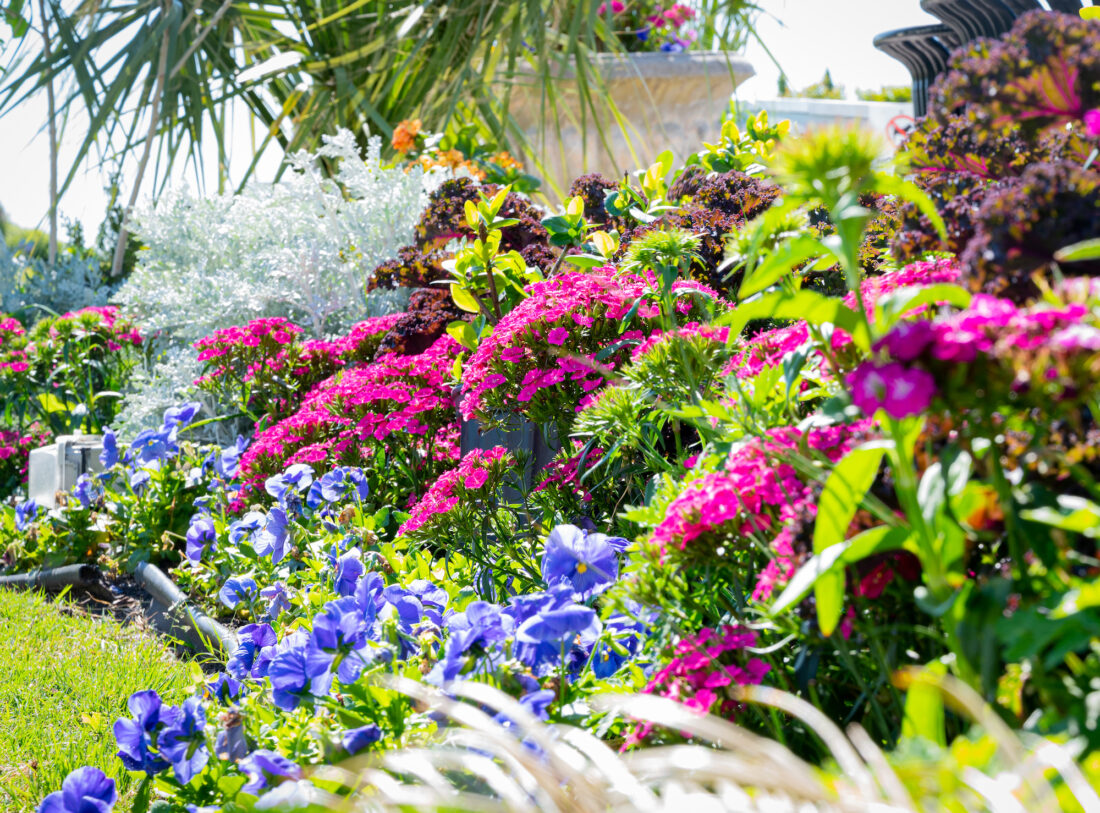Between the Atlantic Ocean and the Wrightsville Beach Sound along North Carolina’s Intracoastal Waterway, the Blockade Runner Beach Resort has beckoned oceangoers for more than five decades. But beyond its midcentury-chic decor and private cabanas, what makes the property especially rare are the lawn and gardens leading to the water, a gorgeous outdoor living space tended by the hands of an artist in residence of sorts—Aubrey Doggett.

Aubrey Doggett inside the greenhouse.
Doggett’s early days at the resort in the eighties, working the bell stand, at banquets, and as a bartender, “were storied due to his colorful personality,” says Nicolas Montoya, the resort’s current general manager. But Doggett’s “true legacy,” Montoya continues, “will be marked by what he did when given the opportunity to head outdoors.”
“This place is my church,” Doggett elaborates now, nodding to the series of gardens at the Blockade that he’s nurtured through the years as the resort’s longest-employed person. Today, the resort’s two oceanfront gardens boast lush lawns where he trims the undergrowth, clearing the way for the horizon’s light-dappled views. Out front, the sixty-year-old property’s curb appeal also shines thanks to his attention. “It’s an art in and of itself, that competes with nature,” he explains of his tending.

Prickly pear cacti flower along the beach.

Sweet william, pansies, dianthus, and dusty miller.
When making his plans, he considers the property like a canvas, with the colors of the sky his frame, and in every direction, his composition of blooms bursts with yellows, pinks, and oranges. The tides, the moon, and the seasons also come into play. “I’m manipulating mother nature, so I have to stay humble,” Doggett says.
To address the ocean’s salt spray, which can cause leaf burn, leaf drop, or plant death, he recommends spraying your plants with water. “This is an important and often-forgotten tip in keeping a coastal garden vibrant and healthy,” he says, adding that plantings of ornamental Miscanthus, black night, torulosa junipers, dwarf philodendron, and podocarpus also offer wind and sun protection.

A view of the Blockade Runner.

Spring in bloom.
“Cultivate the soil, add nutrients, and weed often—it’s quite simple,” he says. But there’s nothing simple about Doggett’s designs. With a never-ending to-do list, he says that staying ahead of the curve is a must, and that he’s grateful for a staff that truly loves the work. There are some flora he prefers to avoid—including pansies. He shakes his head. “They’re just rabbit food,” he says. “The rabbits also eat my portulacas. Other than a musket, I don’t know what else to do,” he adds with a wink. “Maybe chef can have a menu special.”

A bunny sampling Doggett’s work.
At sixty-eight-years-old, Doggett is one of those characters who often makes you wonder if he’s pulling your leg. But he takes his art seriously. Just across the Intracoastal Waterway, Doggett lives mere steps from his packed-to-the-ceiling greenhouse, where he’s been known to wait out hurricanes. “We really have an advantage, [living] just a mile and a half away, to protect the tropicals that can grow for years,” he says. However, “I’ve learned not to take it personally when a hurricane comes through, and I have to start over again. It’s job security.”
Still, Doggett says his knees and hands have had just about enough. In that same breath, he likens his art to oxygen. “I’m a thing of the past,” he says. “I may have three summers left in me.” He smiles at his right-hand gardener, Lisa King. “Maybe Lisa can take over.” King assures him that she’ll just roll him around in a wheelbarrow when that time comes.

